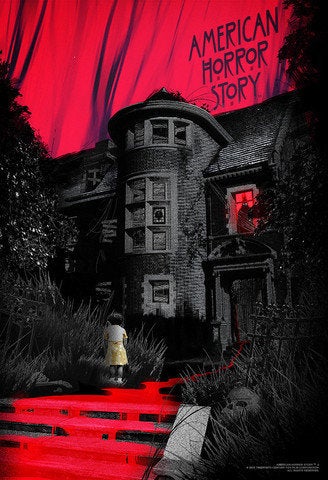WARNING: Spoilers for all seasons of "American Horror Story."
Ever since Ryan Murphy revealed that all of the "American Horror Story" seasons are connected, fans have been trying to figure out exactly how. While certain characters have been linked to a few seasons, one popular theory manages to connect all of them in one fell swoop.
Regulars on "American Horror Story" message boards and comment sections have probably heard this one before, but since it's resurfaced again -- and fits with the newest season, "Hotel" -- we give you: The Dante's Inferno Theory.
The theory, which was first thought up by critic Jacqueline Bircher on the TV blog Red Herry, is based on "Inferno," a chapter in Italian writer Dante Alighieri's classic 14th-century epic poem "Divine Comedy."
The chapter chronicles the author's voyage through the nine circles of hell, each named for a sin: Limbo, Lust, Gluttony, Greed, Anger, Heresy, Violence, Fraud and Treachery. Throughout, he is led by his guide, Virgil.
According to the theory, co-creators Murphy and Brad Falchuk together are our Virgil, and we are Dante, traveling through another hellish realm with each season. (There is a catch, though: We don't experience them in the same chronological order as Dante's poem.)
"Murder House": Lust
The theme of attraction is evident in Ben Harmon's affair to Violet Harmon's burgeoning feelings for Tate Langdon, who rapes her mother. There's also the affair between Larry and Constance Langdon, and the existence of Moira, the housekeeper who appears grandmotherly to women but seductively young to men.
"Asylum": Fraud
Among this season's biggest liars include the Briarcliff staff members who profess to treat the mentally ill while actually performing twisted experiments on them, the corrupt church members, the secretly possessed Sister Mary Eunice and the secret serial killer Dr. Thredson.
"Coven": Treachery (or Anger)
Season 3 is defined by the coven's attempts to name its new Supreme, with each member trying to undermine the others to get what she wants. Fiona betrays Madison, slitting her throat. Madison entombs Misty. Cordelia's husband is behind her blinding. Another theory suggests Anger as the overarching theme due to the number of longtime grudges between characters.
"Freak Show": Greed
Led by Elsa Mars, members of Fräulein Elsa's Cabinet of Curiosities are repeatedly exploited for their freakish features in the name of fame and fortune. Then there are the con artists Stanley and Maggie, who want in on the show for their own purpose -- to sell the freaks' bodies to a museum.
"Hotel": Gluttony
The virus afflicting Valentino, the Countess, Donovan and everyone they've given it to makes its hosts crave sustenance -- in their case, blood. Other characters struggle with indulgence in alcohol, drugs and murder.
That just leaves Limbo, Heresy, Violence and either Anger or Treachery. Bircher argues that the theory is further supported by the fact each season is set largely in one physical place -- the mansion, the asylum, the witches' academy, the circus, the hotel -- like the poem. Further, "Inferno" depicts a hell populated by those who refuse to own up to their wrongdoing, like the majority of characters appearing in "American Horror Story."
Could Murphy and Falchuk really have nine seasons planned?
Also on HuffPost:

